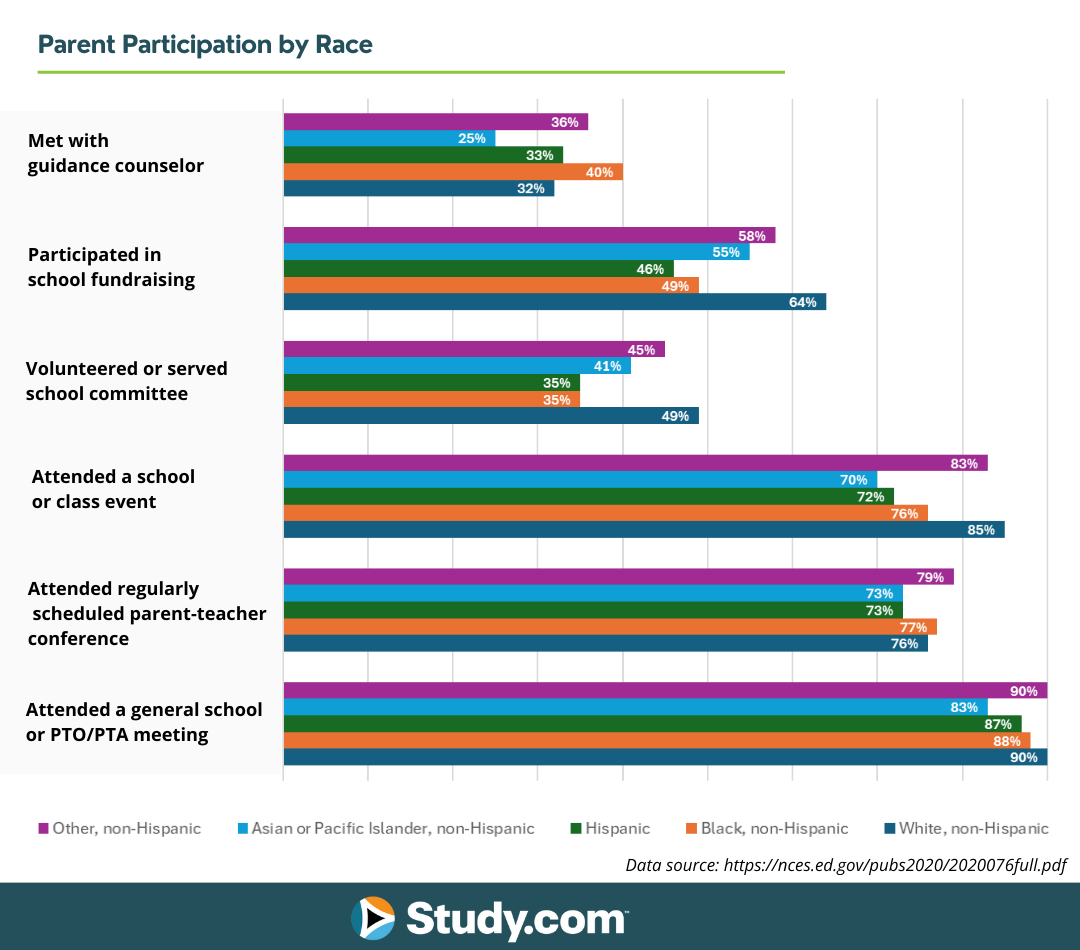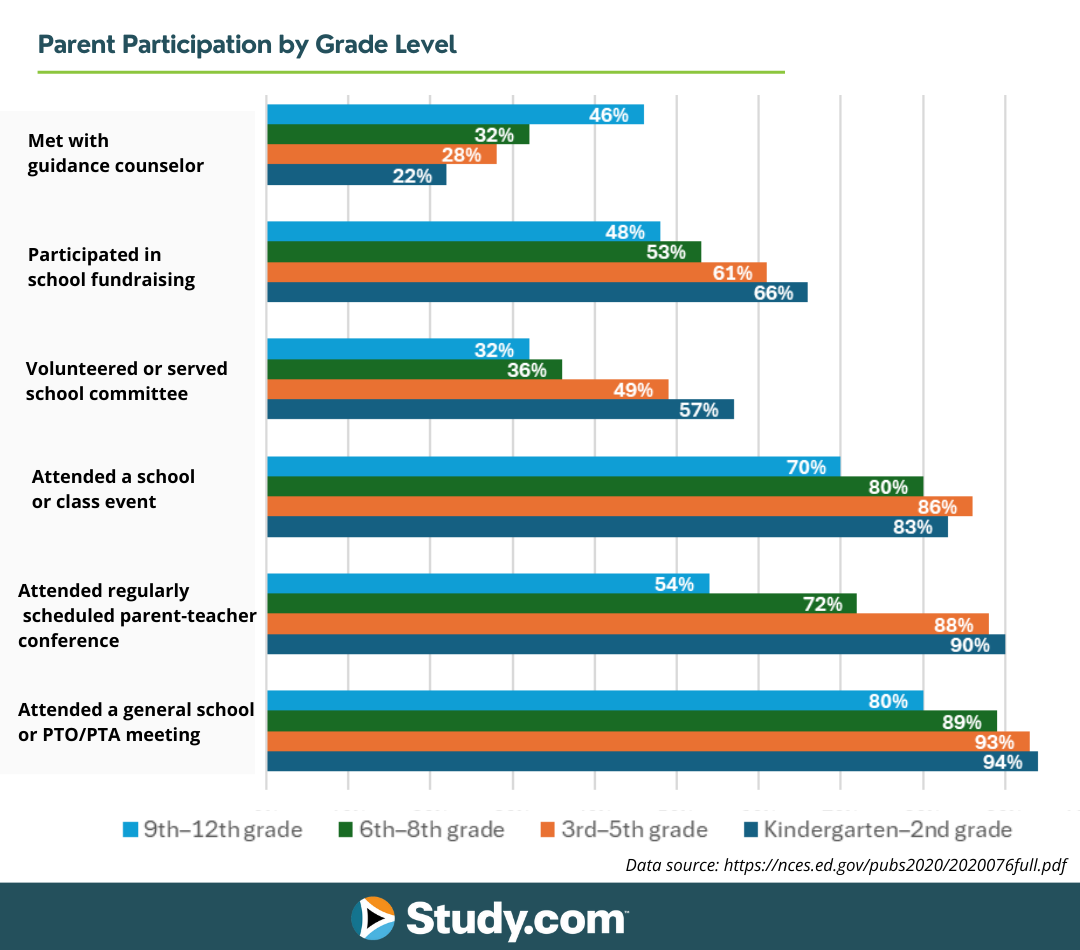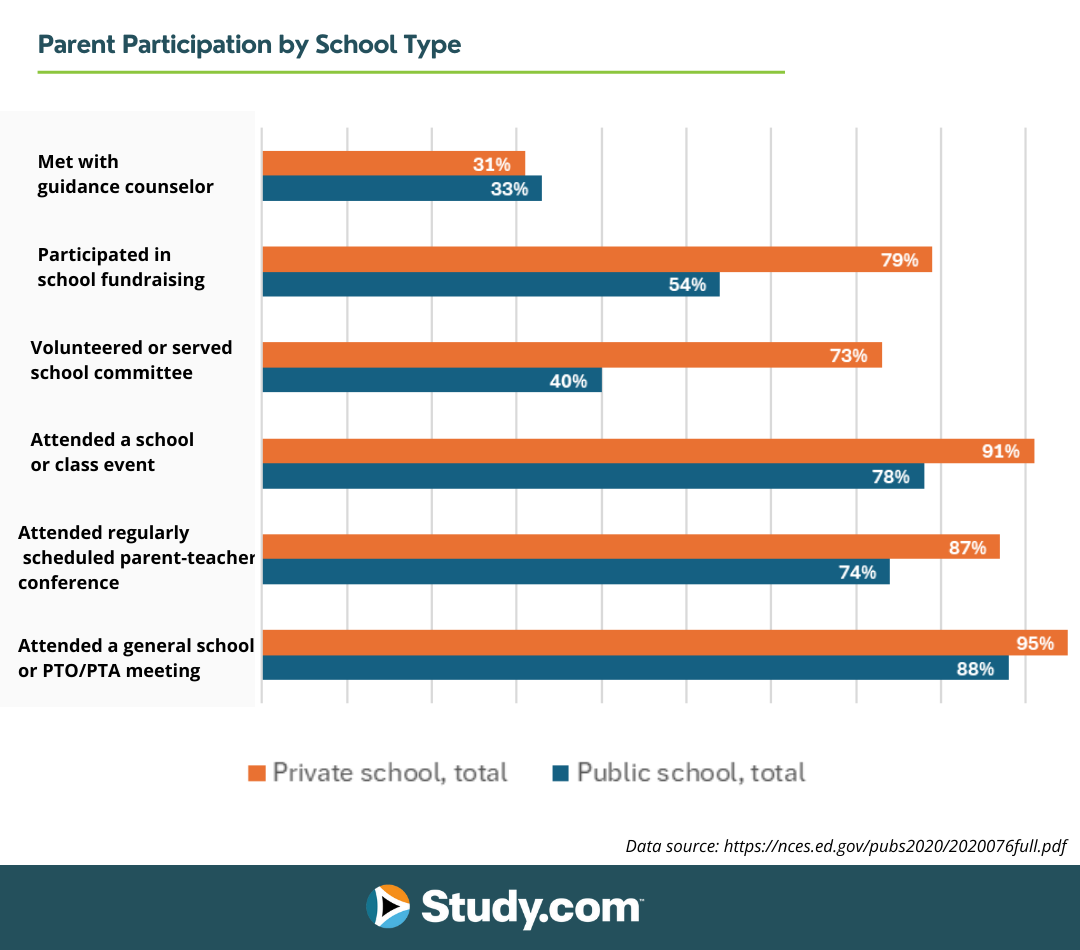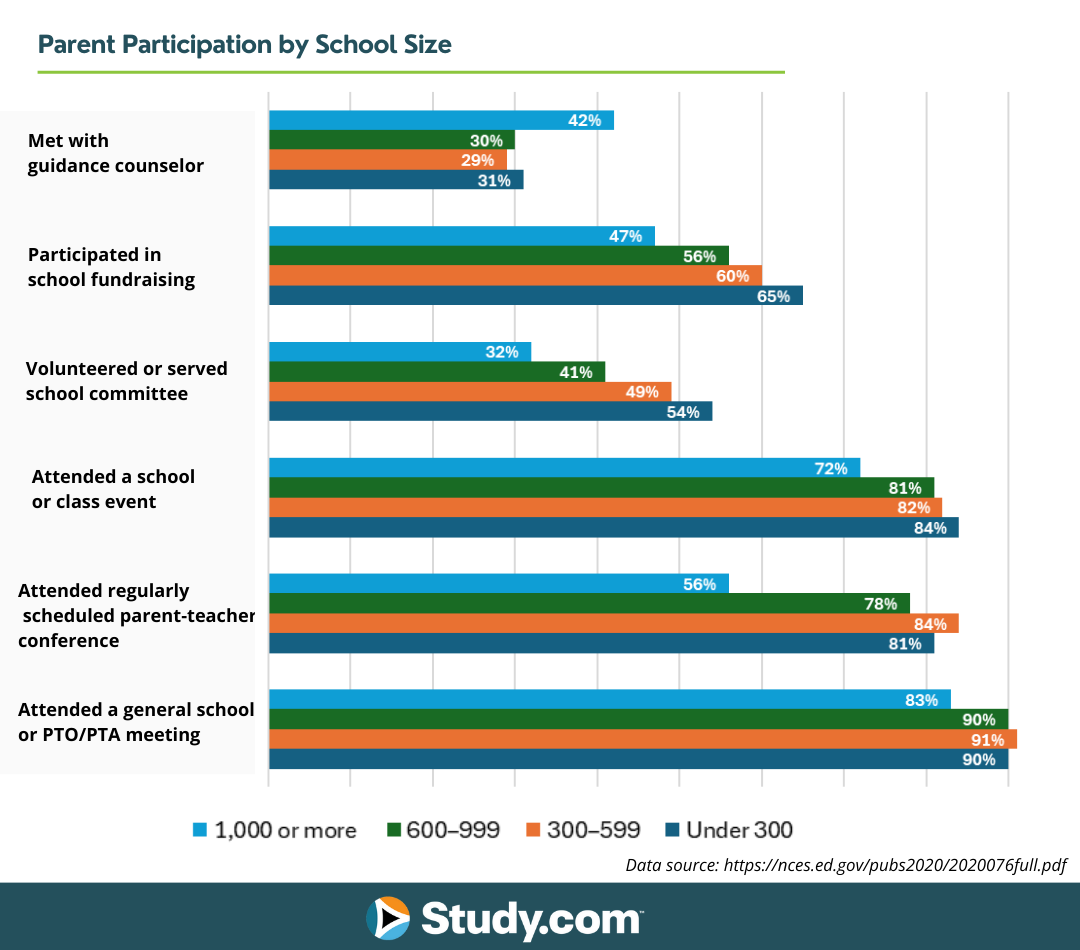What difference does it make if you are involved in your student's school and its activities and events?

The importance of parental involvement in children's education is increasingly recognized and influences educational policies and practices across the U.S.
Although many states have enacted legislation to enhance parental input, disparities in involvement remain, especially in high-poverty areas. This is significant as studies confirm that parental engagement positively affects student performance and attendance.
In this article, Study.com uses data from the National Center for Education Statistics (NCES), to explore how parental participation varies across different demographics, school sizes, and school types. The analysis aims to quantify parental involvement across various school settings and examine its impact on student success, with a particular focus on socioeconomic disparities. The data also serves as a road map for schools to use to identify weaknesses in parental involvement opportunities and for parents to see where changes could be made, in collaboration with administrators, to improve chances for them to become more involved in their schools for the sake of their students.
Methodology
This article utilizes NCES data, with additional insights from established educational research sources such as the Harvard Family Research Project, Michigan Department of Education and The Urban Institute's Housing Matters. The analysis focuses on quantifying parental involvement across various school settings to understand its impact on student success.
Why School Participation Matters
The link between parental involvement and student achievement is well-documented. Active parental engagement not only improves academic performance but also positively affects students' attitudes toward learning and their overall behavior in school.
Research from the Michigan Department of Education and the Harvard Family Research Project demonstrates that students whose parents are heavily involved in their education are more likely to achieve higher grades and test scores, attend school regularly, develop better social skills, and adapt well to school environments.
Despite these benefits, significant gaps exist in the level of parental involvement across different socioeconomic backgrounds, influenced by factors like language barriers, work schedules, and access to transportation.
Barriers to Educational Participation
While many families strive to be involved in their children's educational endeavors, some hurdles may impact their ability to do so. For example, significant disparities exist in the level of parental involvement in households where a language other than English is the dominant language.
Recent studies have identified barriers these families encounter, such as linguistic discrimination, which can discourage parent participation. These findings emphasize the critical role that schools, educators, and administrators play in making all parents feel respected and understood, thereby fostering a beneficial relationship for students, parents, and teachers alike.
Income disparities can also play a part in a parent's ability to be involved in their child's education. A study featured in "The Qualitative Report" by Stephanie Lechuga-Peña and Daniel Brisson in 2018 highlights the structural barriers faced by low-income mothers, especially those in public housing, such as nontraditional work hours, lack of transportation, and difficulty finding child-care. These issues, along with certain language and cultural differences, can often lead to a misinterpretation of disinterest in their children's education, despite their strong desire to be involved.
Enhancing Parental Involvement
To foster a more inclusive environment and maximize parental involvement, schools must provide support, give positive feedback, and proactively reach out to parents through personalized interactions.
Creating policies that recognize and address unique challenges, especially those faced by
non-English speaking and low-income families, is essential. To combat these issues, schools should strive to implement programs and allocate resources effectively to ensure all families can engage in their children's education. Moreover, schools should adapt their communication styles to connect effectively with diverse student bodies and their families and understand the importance of working with parents from all backgrounds.
Analysis of NCES Data on Parental Participation
Parent participation in school activities is generally high but varies significantly across racial groups, socioeconomic statuses, and school types.
NCES data indicates that private schools often have higher participation rates, reflecting their higher enrollment of middle- and high-income families, particularly in urban areas.
Participation is highest among white, non-Hispanic families, with strong attendance at school meetings, events, and fundraising activities. Black, non-Hispanic and Hispanic families engage less in volunteering and fundraising, likely due to socioeconomic factors. Asian or Pacific Islander families show the lowest engagement overall.


Comparing School Event Participation and Volunteering
Event Attendance and Volunteering: White, non-Hispanic families show the highest levels of engagement in school events (85%) and volunteering (49%). This contrasts sharply with lower participation rates among Hispanic and Black families, highlighting potential barriers such as language differences, cultural expectations, or economic disparities.
Guidance Counselor Interaction: Black, non-Hispanic families participate more frequently in meetings with guidance counselors (40%), suggesting a higher interest in school support services which may be due to various socioeconomic factors affecting these communities.
Geographic Distribution
City to Rural Areas: Participation rates in parent-teacher conferences and school events range from 77% to 83%. Rural areas show a slight increase in volunteerism, from 42% in urban settings to 45% in rural settings, suggesting stronger community ties and possibly fewer alternative commitments that compete with school involvement.
Guidance Counselor Meetings: Rural areas report lower participation rates (32%) compared to cities (34%). This discrepancy could reflect the limited availability of school resources or fewer counselors per student in rural districts.

Student Age Is a Factor in Parent-Teacher Conference Attendance
Elementary vs. High School: Engagement significantly drops from elementary to high school, with parent-teacher conference attendance falling to 54% by grades 9th–12th. This decline might reflect older students' growing independence and the different nature of parental involvement required as children age.

Private Schools Offer More for Parental Engagement
In private schools, engagement is notably robust, with conference and event attendance rates surpassing 85%, and a strong volunteering rate of 73%. This high level of involvement is often supported by the schools' missions and the resources available for parent engagement activities.

Smaller Schools Show Stronger Engagement Numbers
Smaller schools (under 300 students) generally see higher engagement in school activities, likely due to their more tight-knit community settings which in turn foster close relationships between parents, teachers, and staff. In contrast, larger schools often struggle with lower engagement rates, possibly due to the challenges of personalizing the educational experience in a larger setting.
This story was produced by Study.com and reviewed and distributed by Stacker Media.
